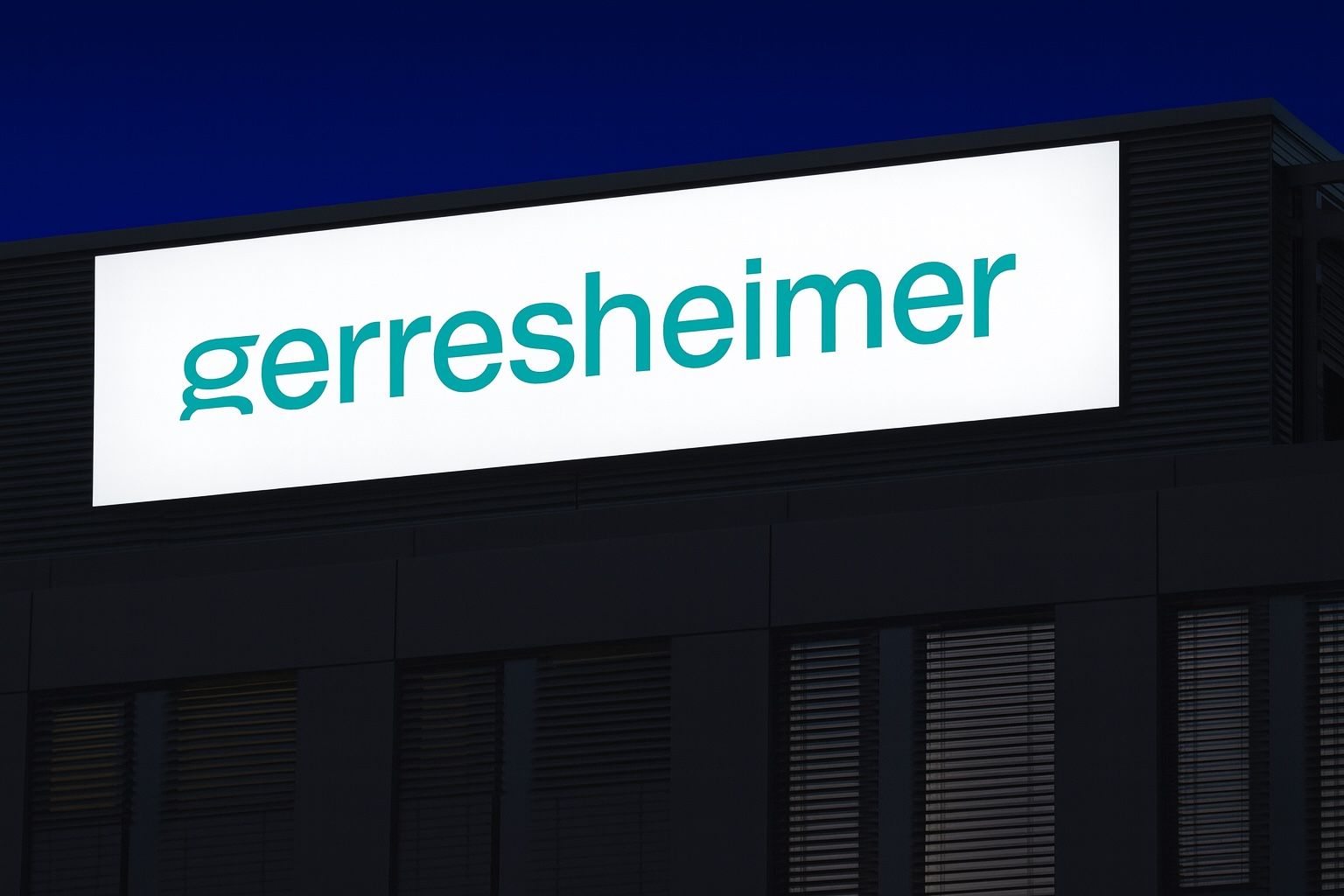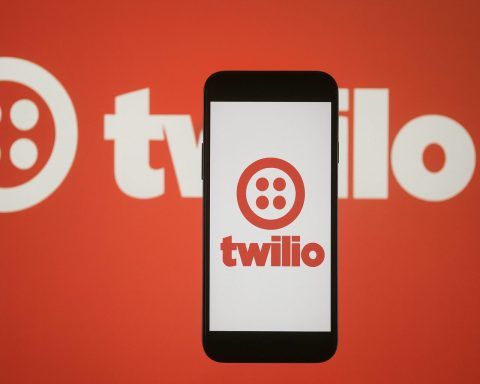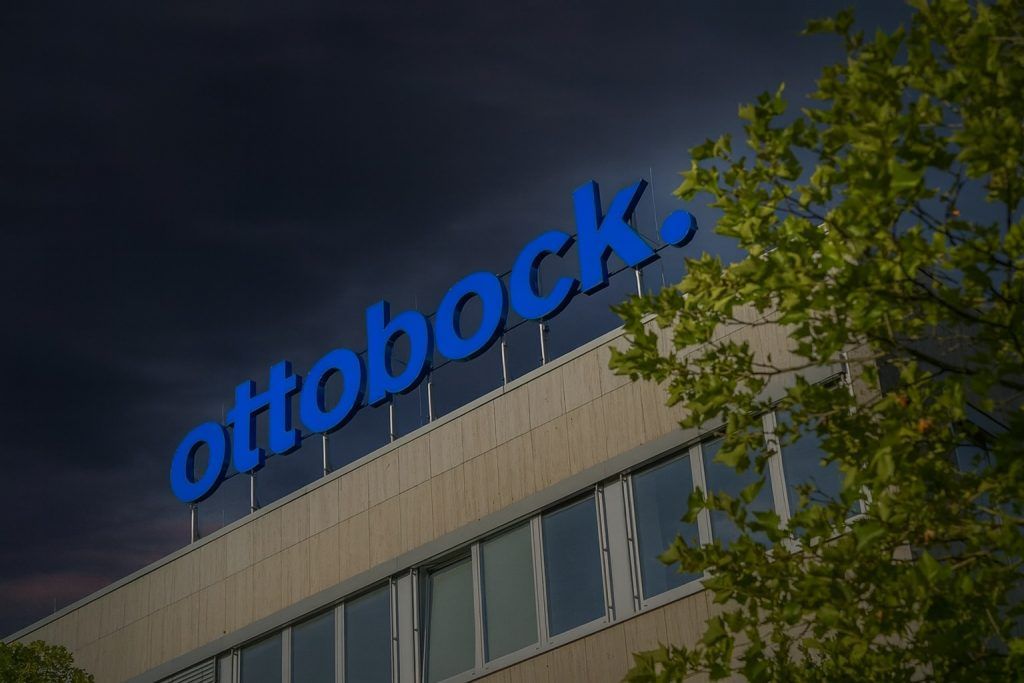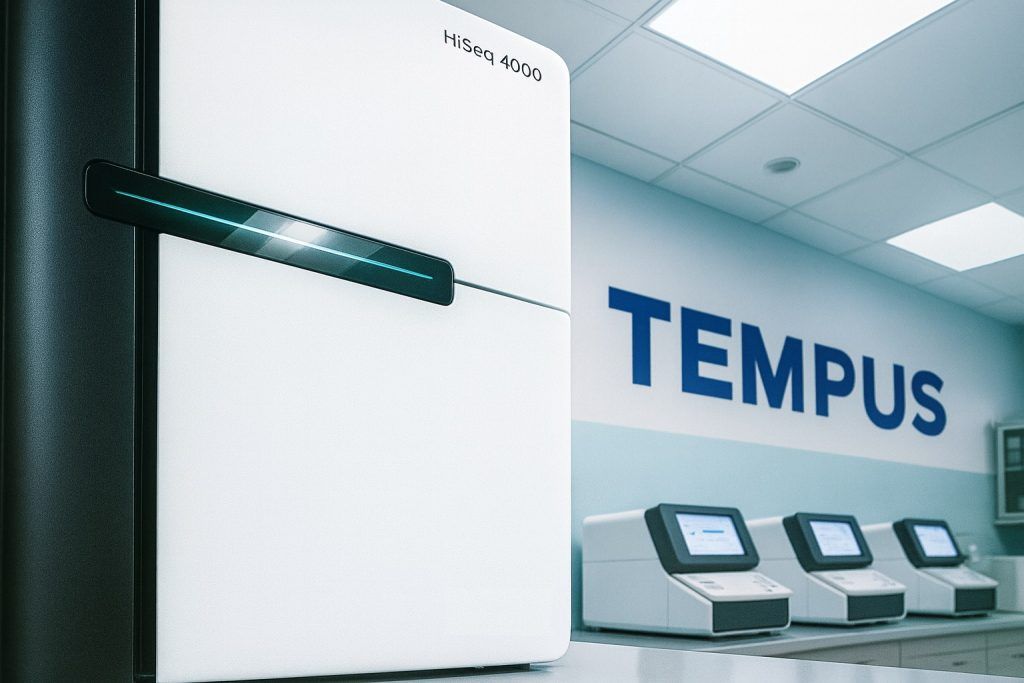- Another Guidance Cut: Gerresheimer, a German pharma and cosmetics packaging firm, slashed its 2025 outlook after a weak Q3, now projecting an organic revenue decline of 2–4% (vs prior 0–2% growth) and a lower EBITDA margin of ~18.5–19% (vs ~20%) [1] [2]. This marks the third profit warning in 2025alone [3].
- Stock Plummets: Shares plunged ~12% on Oct 9, 2025, hitting around €33 – the bottom of the MDAX midcap index [4]. The stock has shed over 50% of its value year-to-date amid repeated downgrades and negative news [5].
- Weak Demand in Key Markets: Gerresheimer blames softer demand, especially the “subdued” cosmetics market and oral liquid packaging segment, for the outlook cut [6]. Slowing personal care and beauty spending have hurt its consumer-dependent business [7].
- Mounting Troubles: This latest warning follows a string of setbacks – including a regulatory probe by BaFininto Gerresheimer’s 2024 accounts (announced late September) and multiple earlier guidance cuts in June and July [8]. The BaFin audit (over possible early revenue recognition) triggered a one-day stock crash of up to –38% and prompted a CFO change [9] [10].
- Path Forward – Caution and Hope: Gerresheimer’s new CFO has unveiled a “transformation program” with cost cuts, selective investments, and efforts to boost free cash flow [11]. The company expects a stronger Q4 as new pharma production lines ramp up, but analysts remain divided – some maintain bullish targetswhile others warn of low management credibility and even potential client losses [12] [13].
Gerresheimer’s Profit Warning Shocks Investors
Gerresheimer AG – a supplier of specialty packaging (from glass vials and jars to medical devices like injector pens) – delivered yet another profit warning for 2025, stunning investors. Late on October 8, the Düsseldorf-based firm announced it would abandon its previous annual guidance after third-quarter results came in far below expectations [14] [15]. CEO Dietmar Siemssen was candid about the shortfall: “The operative performance of our business in the first nine months is clearly below our expectations,” he admitted [16]. As a result, Gerresheimer’s board withdrew its prior targets and issued gloomier new forecasts for the full year [17] [18].
Under the revised outlook, Gerresheimer now anticipates organic revenue to shrink by 2–4% in 2025, versus the earlier guidance that ranged from flat (0%) to +2% growth [19]. Likewise, the adjusted EBITDA profit margin is seen around 18.5–19% instead of ~20% [20]. These figures confirm a significant slowdown: by comparison, Gerresheimer had still been guiding for modest growth at the start of the year. Management acknowledged that even an expectedly stronger Q4 won’t rescue the year – “the guidance for 2025 is therefore not achievable” under current conditions [21].
The immediate trigger was a weak Q3 2025. Preliminary numbers showed quarterly revenue at €560.7 million and adjusted EBITDA €103.4 million [22]. Organically, sales fell 1.2% year-on-year in Q3, with the EBITDA margin at 18.8% [23] – all below market expectations. In fact, analysts at Bernstein noted Gerresheimer’s Q3 revenue came in ~4.3% under consensus, with EBITDA 11% below and EPS 22% below forecasts [24]. This disappointment forced Gerresheimer’s third guidance cut this calendar year, as Reuters observes [25]. It follows outlook downgrades in June and July, making 2025 a year of repeated resets [26]. “In a disastrous year, [Gerresheimer] delivered three profit warnings in a row,” Bernstein analysts lamented [27].
Stock in Freefall – How the Market Reacted
Investors reacted with alarm at Gerresheimer’s news. The morning after the announcement (Oct 9, 2025), Gerresheimer’s stock opened down over 12%, around €33 per share [28]. This placed it at the bottom of the MDAX index and near multi-year lows. Year-to-date, Gerresheimer’s share price has now collapsed by over 50% [29], erasing billions in market value. Even before this latest plunge, the stock had been grinding downward since its 2023 highs [30] – a slide only exacerbated by recent events.
It’s worth noting how dramatic the sentiment swing has been. Just weeks earlier, Gerresheimer was rocked by a regulatory bombshell: on September 24, Germany’s financial watchdog BaFin opened an audit into the company’s 2024 financial statements over suspected accounting violations [31]. Specifically, BaFin questioned whether Gerresheimer improperly booked revenue “before the revenue was actually realised” on some customer contracts (so-called bill-and-hold transactions) [32]. That announcement sent Gerresheimer’s stock into a tailspin – plunging as much as 38% intraday and closing down ~20% to 13-year lows [33] [34]. The episode deeply rattled market confidence, as it raised the specter of an accounting lapse (something especially sensitive in Germany post-Wirecard) [35].
Against that backdrop, this new profit warning felt like pouring salt on the wound for shareholders. “Gerresheimer has once again issued a terrible profit warning,” one trader commented bluntly, noting it came with “very weak third-quarter figures” to boot [36]. The stock’s sharp drop reflected not just the downgraded profits, but erosion of trust. Indeed, short sellers have targeted Gerresheimer heavily – it is now among the most shorted stocks in Europe with roughly 8.4% of its float sold short [37]. That high short-interest hints that many investors are betting on further declines, underscoring prevailing pessimism.
Some context: Gerresheimer’s dual exposure to healthcare and consumer markets had initially made it attractive. For instance, it’s a key supplier of injector pens for blockbuster weight-loss drugs (like GLP-1 agonists), as well as vials and inhalers [38]. Positive news in that arena briefly lifted the stock this year – e.g. when trial results for a rival weight-loss pill underwhelmed, Gerresheimer shares rose ~3% on expectations that demand for injectable drug devices would stay strong [39]. But those bright spots have been overwhelmed by the company’s challenges elsewhere.
What’s Behind the Bleak Outlook?
Gerresheimer’s warning spotlighted persistent weakness in key end markets. The company cited “slower-than-expected market growth” and a poorer business performance through Q3 as reasons it can no longer hit its targets [40] [41]. In particular, demand from the cosmetics industry has been sluggish – a trend evident all year. “The demand in the cosmetics market is mau,” CEO Siemssen noted, using the German word for lousy [42]. Gerresheimer makes items like perfume flacons, cream jars, and deodorant roll-on bottles, so a downturn in beauty and personal care spending directly dents its sales. Consumers worldwide have pulled back on discretionary purchases, and “slowing demand for personal care and beauty products has weighed on consumer goods companies”broadly, Reuters observes [43]. That macro pressure appears to be hitting Gerresheimer’s Beauty segment hard.
Even on the pharma packaging side, there are soft spots. Gerresheimer reported “subdued demand…in the area of containment solutions for oral liquids” – essentially bottles and vials for liquid medicines [44] [45]. Orders for those products (used for cough syrups, oral vaccines, etc.) have lagged, possibly as customers work through inventory or face their own demand dips. The company’s Plastics & Devices division did benefit from strong orders for drug delivery systems like injection devices, which helped offset some declines [46]. But it wasn’t enough: overall organic growth was negative. As one German media outlet summarized, Gerresheimer’s recent performance was dragged down by “the anhaltend (persistently) damped demand in the cosmetics market and for packaging of liquid medications” [47].
In short, Gerresheimer is caught in a squeeze: its consumer-facing business (cosmetics packaging) is cyclical and currently in a downturn, while its pharma-related segments – though steadier – are not growing fast enough to compensate, at least not this year. Global economic uncertainties (trade tensions, inflation worries) also haven’t helped sentiment, as shoppers and pharma clients alike became more cautious [48].
BaFin Probe and a New CFO: Governance Under Scrutiny
Another major factor clouding Gerresheimer’s outlook is the accounting probe by BaFin. The German regulator’s investigation, announced in late September, cast doubt on a small portion of Gerresheimer’s 2024 revenue. Specifically, BaFin is examining whether Gerresheimer improperly pulled forward certain sales – recognizing revenue on customer orders before delivery (under “bill-and-hold” arrangements) [49]. The amount in question is relatively modest (“low double-digit million” euros, under 5% of annual revenue) [50], and Gerresheimer insists those revenues were booked appropriately according to the rules. Nevertheless, the very fact of a regulatory audit – and the specter of an accounting flaw – dealt a heavy blow to confidence. As Reuters noted, German investors have been hyper-sensitive to accounting issues since the Wirecard scandal, so BaFin’s action put Gerresheimer in an unwelcome spotlight [51].
Gerresheimer’s leadership moved quickly in response. In the same month, the company replaced its Chief Financial Officer. Longtime CFO Bernd Metzner resigned “at his own request” (amid suggestions of shareholder discontent), and was succeeded in September by Wolfgang (“Wolf”) Lehmann, a newcomer from the private equity sector [52]. Notably, Metzner’s exit came after a failed attempt to sell Gerresheimer to financial investors and a steep share price decline. An activist fund, Active Ownership Capital (a major shareholder), had been openly critical – calling for a strategic review and questioning Metzner’s role in value destruction [53]. With the activist pressure mountingand now BaFin raising questions, Gerresheimer’s board evidently decided a leadership change was needed, installing Lehmann as the new finance chief.
JPMorgan analyst David Adlington points out that this latest profit warning was “the first under the new CFO”, and indeed the fourth warning in two years for Gerresheimer [54]. The repetition of bad news has many questioning the company’s internal controls and planning. As one market commentator quipped, Gerresheimer’s management seems to have “low visibility” into its own business trajectory [55]. Bernstein analysts went further, flagging “concerns about execution and a lack of transparency” – especially since management gave few hints of these troubles even in recent investor meetings [56] [57]. The fact that issues (like weak cosmetics demand or accounting practices) weren’t addressed sooner or more clearly has eroded credibility.
Crucially, Bernstein also warns that Gerresheimer’s woes could start affecting its relationships: they “see danger of early contract terminations by the pharma industry” if Gerresheimer doesn’t get its act together [58]. In other words, some pharmaceutical clients might shift business away if they lose confidence in Gerresheimer’s stability or financial health. That is a worst-case scenario, but it highlights how trust – from investors and customers alike – has become Gerresheimer’s most precious commodity, and right now it’s strained.
Cost Cuts, Transformation… and Hope for a Turnaround?
Faced with these compounding challenges, Gerresheimer’s management is trying to right the ship. Alongside the outlook cut, the company announced a sweeping “transformation program” aimed at boosting profitability and restoring confidence [59]. This program includes cost-saving measures and efficiency drives, such as a hiring freeze, discretionary spending cuts, and what the company calls “selective investment planning” [60]. In practice, that means Gerresheimer will likely scale back or delay certain capital expenditures, focusing only on projects with clear near-term returns to conserve cash. Indeed, protecting liquidity is a priority – Gerresheimer managed to generate a modest +€21 million free cash flow in Q3 [61], and it wants to improve on that. Management has explicitly said steps will be taken to “strengthen free cashflow” and shore up the balance sheet [62].
Gerresheimer is also re-focusing its business portfolio. The company confirmed that the planned separation of its Moulded Glass unit (used for things like basic glass vials and containers) is on track – by 2026 that division will be carved out as an independent entity [63]. This could pave the way for a sale or spin-off, allowing Gerresheimer to concentrate on higher-margin product lines. The firm’s strategy increasingly emphasizes complex “systems and solutions” for biotech and pharma clients [64] – e.g. drug delivery devices, pre-fillable syringes, smart inhalers, etc. These are areas where Gerresheimer can potentially differentiate itself and command better pricing, unlike the more commoditized cosmetics packaging market.
CEO Siemssen stressed that expanding into biologics and innovative therapies is key for returning to growth: “Our goal is to grow faster than the overall market again… The expansion of our product portfolio to include systems and solutions for biologics… will contribute considerably to this,” he said [65]. In fact, Gerresheimer noted that demand for its drug delivery systems remains robust, and new production lines for these devices are ramping up now [66]. The company expects a stronger Q4 2025 thanks to these ramp-ups, especially as major pharma clients prepare launches for injectable treatments [67]. If those projects proceed as planned, Q4 could provide a temporary boost – though whether it’s enough to stabilize the annual results is uncertain.
From a financial perspective, Gerresheimer’s downgraded guidance already assumes Q4 will outperform Q3, yet still not fill the gap entirely [68]. The midpoint of the new outlook (-3% organic revenue) implies Gerresheimer’s full-year 2025 sales will slightly decline versus 2024 – a sobering outcome for a company that, until recently, had been touting growth initiatives. Nonetheless, if the transformation plan gains traction, the hope is that 2026 and beyond could see a return to growth. The company’s multi-year projects (like a new U.S. production facility for medical vials [69] and the potential molded-glass spin-off) might start bearing fruit, positioning Gerresheimer leaner and more focused.
Mixed Signals from Analysts – Cautious Optimism or More Pain Ahead?
The investment community is split on Gerresheimer’s prospects. Some analysts argue the sell-off has been overdone and that the company can recover if it executes well. Indeed, a few have surprisingly maintained bullish stances even after the profit warning. For example, JPMorgan reiterated its “Overweight” (Buy) rating and a price target of €99.30 – roughly triple the current share price [70]. UBS likewise kept Gerresheimer at “Buy” with a €75 target, at least “for now” pending further clarity [71]. These optimists believe Gerresheimer still has solid positions in pharma packaging and could rebound once temporary headwinds (cosmetics slump, one-off writedowns) pass. They also point out that, at €33, the stock is trading at relatively low valuation multiples (after the rout) and “much of the negative news is now priced in” [72]. In other words, expectations are so low that any stabilization might surprise to the upside.
On the other hand, many analysts are sounding alarms. As noted, Bernstein reacted to the latest warning by downgrading Gerresheimer to “Underperform” and slashing their target price to ~€47.5 [73]. Bernstein’s critique centered on management’s credibility – questioning how known challenges kept leading to fresh surprises, and criticizing a perceived lack of transparency with investors [74] [75]. Deutsche Bank similarly cut the stock from Buy to Hold (target cut to €58 from €94), with analyst Falko Friedrichs calling Gerresheimer’s visibility “low” and expressing astonishment that just three months after the last update, another downgrade was needed [76]. Such comments reflect a broader concern: frequent profit warnings often indicate deeper structural issues or poor forecasting, and until Gerresheimer proves otherwise, skepticism abounds.
The fallout from the BaFin probe also looms in analysts’ minds. If the audit were to find serious accounting missteps, it could further impair Gerresheimer’s financials or reputation. However, the company’s own update on that front noted the review involves <5% of revenue and that Gerresheimer is fully cooperating [77] [78]. Barclays analysts pointed out that even if some revenue was recognized early, it’s a small portion and largely a timing issue [79]. Still, the overhang won’t clear until BaFin concludes its investigation in the coming months.
Looking ahead, the next pivotal moment will be Gerresheimer’s Q3 earnings report on October 10, 2025, followed by any commentary on Q4 trading. Management will need to convince investors that Q4’s “expected stronger” performance is materializing [80], and that cost-cutting measures are taking hold. They will also likely face tough questions on their conference call about how to prevent further surprises. Will Gerresheimer’s “comprehensive transformation” be enough to stop the bleeding? The jury is out.
For now, the company remains in the market’s penalty box. As one German outlet put it, Gerresheimer’s news flow has been an unbroken “series of bad news” [81] lately. Little wonder that many shareholders are avoiding trying to “catch a falling knife” until evidence of a turnaround emerges [82]. In the words of a trader reacting to the latest drop: “Gerresheimer [has] very weak numbers… [it’s] a terrible profit warning” [83].
Bottom Line: Gerresheimer’s steep stock crash and fourth profit warning in two years underscore a crisis of confidence. The company is taking steps – new leadership, belt-tightening, refocusing on growth niches – to regain its footing. There are glimmers of potential (strong demand for drug delivery devices, a likely better Q4), but until Gerresheimer can string together a few positive quarters and resolve the BaFin audit cleanly, skepticism will dominate. Some experts advise that “much negative news is now priced in” [84] and the worst could be over. Yet others caution that without clearer execution and transparency, Gerresheimer has more to prove before investors can truly believe the turnaround story. The coming quarters will be crucial to determine whether this troubled mid-cap can pull out of its downward spiral – or if further surprises lurk around the corner.
Sources: Gerresheimer company statement [85] [86]; Börsen-Zeitung/dpa report [87] [88]; n‑tv Marktbericht [89] [90]; Reuters (Laudani) [91] [92]; Reuters(Williams) [93] [94]; Reuters (Hogg/Burger) [95] [96]; MarketScreener/dpa [97] [98]; n‑tv/Handelsblatt commentary [99] [100]; DER AKTIONÄR [101].
References
1. www.boersen-zeitung.de, 2. www.reuters.com, 3. www.reuters.com, 4. www.reuters.com, 5. www.marketscreener.com, 6. www.n-tv.de, 7. www.reuters.com, 8. www.reuters.com, 9. www.reuters.com, 10. www.reuters.com, 11. www.boersen-zeitung.de, 12. www.n-tv.de, 13. www.n-tv.de, 14. www.reuters.com, 15. www.reuters.com, 16. www.finanzen.at, 17. www.boersen-zeitung.de, 18. www.boersen-zeitung.de, 19. www.boersen-zeitung.de, 20. www.boersen-zeitung.de, 21. www.reuters.com, 22. www.deraktionaer.de, 23. www.deraktionaer.de, 24. www.n-tv.de, 25. www.reuters.com, 26. www.reuters.com, 27. www.n-tv.de, 28. www.reuters.com, 29. www.marketscreener.com, 30. www.deraktionaer.de, 31. www.reuters.com, 32. www.reuters.com, 33. www.reuters.com, 34. www.reuters.com, 35. www.reuters.com, 36. www.marketscreener.com, 37. www.reuters.com, 38. www.reuters.com, 39. ts2.tech, 40. www.finanzen.at, 41. www.finanzen.at, 42. www.boersen-zeitung.de, 43. www.reuters.com, 44. www.finanzen.at, 45. www.n-tv.de, 46. www.finanzen.at, 47. www.n-tv.de, 48. www.reuters.com, 49. www.reuters.com, 50. www.reuters.com, 51. www.reuters.com, 52. www.reuters.com, 53. www.reuters.com, 54. www.marketscreener.com, 55. www.investing.com, 56. www.investing.com, 57. www.investing.com, 58. www.n-tv.de, 59. www.boersen-zeitung.de, 60. www.boersen-zeitung.de, 61. www.boersen-zeitung.de, 62. www.deraktionaer.de, 63. www.finanzen.at, 64. www.boersen-zeitung.de, 65. www.finanzen.at, 66. www.finanzen.at, 67. www.marketscreener.com, 68. www.reuters.com, 69. www.wallstreet-online.de, 70. www.marketscreener.com, 71. www.marketscreener.com, 72. www.deraktionaer.de, 73. www.investing.com, 74. www.investing.com, 75. www.investing.com, 76. www.investing.com, 77. www.reuters.com, 78. www.reuters.com, 79. ca.investing.com, 80. www.marketscreener.com, 81. www.boersen-zeitung.de, 82. www.deraktionaer.de, 83. www.marketscreener.com, 84. www.deraktionaer.de, 85. www.finanzen.at, 86. www.finanzen.at, 87. www.boersen-zeitung.de, 88. www.boersen-zeitung.de, 89. www.n-tv.de, 90. www.n-tv.de, 91. www.reuters.com, 92. www.reuters.com, 93. www.reuters.com, 94. www.reuters.com, 95. www.reuters.com, 96. www.reuters.com, 97. www.marketscreener.com, 98. www.marketscreener.com, 99. www.n-tv.de, 100. www.n-tv.de, 101. www.deraktionaer.de









